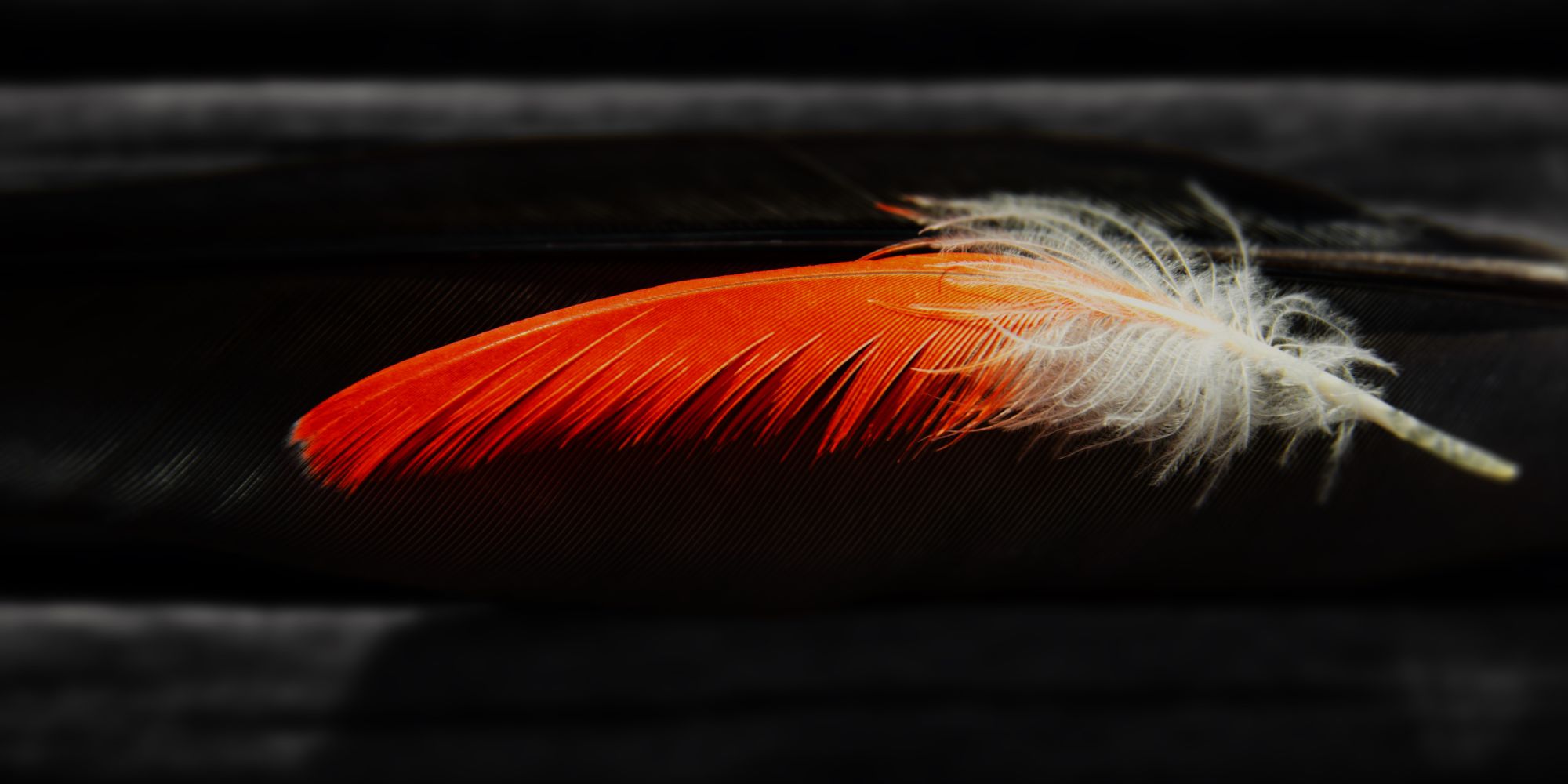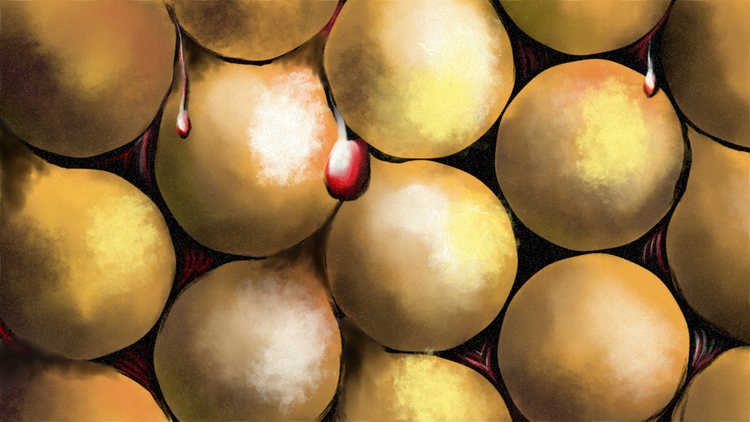
Running Commentary 11/18/2025
Hello,
First off, next week there will be no newsletter, as I’m taking the week of Thanksgiving off.
Secondly, with Thanksgiving coming up that must mean that we’re switching from the Fall birding season to the Winter birding season. Once again I’m hoping to find a long-tailed duck this winter. I’ve heard it’s also expected to be a very finch-filled season, so I’ll be watching for evening grosbeaks and siskins. I’ll let you know if I find any.
For now, I did find some hooded mergansers, about forty total, the most I’ve ever seen in one group. Here’s a photo I got through my scope of seven of them.

Anyway...
Watching...
Reading...

The Man Who Was Thursday by G. K. Chesterton
As might be expected from Chesterton, this book has heavy Christian themes. It’s clear that this book is a Christian allegory, but compared to something like Bunyan or even the Narnia books it’s difficult to clearly answer, a Christian allegory for what?
I went into this book knowing that the entire anarchist council would turn out to be undercover policemen. I assumed it would be a farce about the police being so desperate for a grand enemy of the peace that they end up creating an anarchist movement where none had existed. That’s not what the book actually is. The race to stop the bombing is not the climax, and the novel doesn’t end in comedy. So I was still surprised by the ending.
Chesterton’s disturbed disagreement with the anarchist bomb-throwers of his day is apparent throughout the book, and he takes it mostly for granted that his audience is in agreement with him in this. He doesn’t make much of a case against anarchy in the book, which becomes more of a fevered exploration of a world as uncertain as Chesterton’s philosophical rivals professed it to be, but he does put in some digs against anarchists, particularly when he notes that they often aren’t the poor and downtrodden upset that they’re being governed badly, but the rich and privileged upset that they’re being governed at all. Still, Chesterton’s portrayal of Gregory isn’t wholly unsympathetic, particularly when Gregory complains that the public only knows of anarchists from reading anti-anarchist media, not from hearing the anarchist’s own words.
SPOILERS
The book isn’t really a spy thriller so much as it is a modern (in its day) retelling of the Book of Job, with the infiltration assignment taking the place of the whirlwinds, I suppose. Gregory is directly compared to the Satan of Job in the final scene, and his complaint about the world is essentially the same, that the righteous do not suffer. Tuesday’s lament that he was hurt without apparent reason is also quite Job-like. That’s not to say that this book is a one-to-one match with Job — the biblical work lacks car chases and saber duels, for one thing, and the novel lacks a clear Job analogue — but it’s clear that Job was on Chesterton’s mind here.
Chesterton later stated that he didn’t mean Sunday to be God, merely to be God as He must exist in the minds of pessimistic philosophers who considered life to be random and cruel, which Sunday certainly is. But Sunday is terrifying because he is unknowable, which is at least partly true of God as well, so I think there’s more of Chesterton’s own anxieties here than he let on.
Playing...

Warframe
Just noting that I hit MR30 over the weekend; I’d hit MR29 a little bit ago, and I’ve since made a concerted efforts to farm and rank up through the few ‘frames I hadn’t yet (I had the primes, but not the base ‘frames for Ember, Hydroid, Nekros, and Mag) as well as a few weapons, and now I’m at MR 30, which means I never have to worry about mod capacity on new gear again, and I can provide boosters to a relay.
I had tried to reach MR 30 with Oberon (the ‘frame I first played through the star chart, Second Dream and War Within, etc), but that test specifically is a survival mission that’s very dependent on wiping out crowds quickly, which Oberon just isn’t tuned to do, so after 3 failures I just switched to Octavia who handled it quite easily.
Eating...

Pork-and-Cabbage Stew with Cheddar Dumplings
This stew is quite good, and comes together in just over an hour, which is pretty quick considering the end result seems like something that would cook all day. I suppose that comes down to pork tenderloin cooking quickly, which, speaking of, that’s the main thing that can go wrong here; make sure not to overcook the pork in step 4.
This recipe isn’t much changed from the original, other than this uses a whole head of cabbage rather than just half of one, because what else are you supposed to do with the other half? As a result, this stew isn’t very soupy at all. I suppose you could add more broth, but I like how it came out for me.
There are certain similarities between this dish and both stir-fry and biscuits and gravy. It’s not much like either of those, nor is it like a mix of those, but there are similar notes. The spiced cooked cabbage I think is the part that strikes me as Chinese-reminiscent, and all that pork and black pepper along with the biscuits obviously form the biscuits and gravy parallel.
Ingredients
Stew
- 1 (12-to 16-ounce) pork tenderloin, trimmed, halved lengthwise, and sliced crosswise ¼ inch thick
- 1¼ tsp table salt
- 1½ tsp black pepper
- ½ tsp cayenne pepper
- 5 TBSP flour
- 6 slices bacon, chopped
- 1 head green cabbage, cored and chopped
- 1 large onion, chopped
- 2-3 carrots, peeled and chopped
- 3 cloves garlic, minced
- 2 tsp fresh rosemary or thyme, chopped
- ½ tsp onion powder
- 3 cups chicken broth
- 1 TBSP Dijon mustard
Dumplings
- 1½ cups flour
- 1½ tsp sugar
- 1½ tsp baking powder
- ½ tsp salt
- 1 cup cheddar cheese, shredded
- 1¼ cup heavy cream
Procedure
- Adjust oven rack to middle position and heat oven to 425 ℉.
- Sprinkle pork with 3/4 tsp salt, 3/4 tsp pepper, and the cayenne. Toss pork with 1 TBSP flour and set aside.
- Cook bacon in Dutch oven over medium heat until browned, then remove to a plate.
- Cook pork in leftover bacon fat, breaking up any clumps and arranging in a single layer but not otherwise stirring, until browned on the bottom (3-5 minutes); remove to a plate. (Pork will not be fully cooked yet.)
- Add vegetables, herbs, onion powder, remaining 1/2 tsp salt, 1/2 tsp pepper. Cook until cabbage is wilted (5-7 minutes).
- Coat cooking vegetables in remaining 1/4 cup flour.
- Stir in mustard and broth, scraping up browned bits.
- Bring to a simmer, cover, set to medium-low heat, and cook for 7 minutes to allow flavors to meld.
- Mix together dry dumpling ingredients, then add cheese and cream and stir together until just combined.
- Return pork and bacon to the Dutch oven and stir together.
- Drop small balls of dumpling dough across the top of the stew.
- Bake, uncovered, for 30 minutes.
- Allow to cool for 15 minutes before serving.

Bird of the Week
He remembered a hornbill, which was simply a huge yellow beak with a small bird tied on behind it. The whole gave him a sensation, the vividness of which he could not explain, that Nature was always making quite mysterious jokes... He wondered whether even the archangels understood the hornbill.
So wrote G. K. Chesterton of a hornbill — I suspect of a great hornbill, whose beak is especially large and yellow, though it could have been some other — in a scene from The Man Who Was Thursday in which his hero, Detective Syme, pursues an anarchist leader through a French zoo. The hornbill passes quickly out of the story, but it stood out to me, because at the same time I read that passage, I was actually in the process of drawing a pair of hornbills, these Rufous-necked Hornbills.
The hornbills are a family of birds noted, by Chesterton and most other people, for their proportionately enormous bills; the rufous-necked is actually one of the smaller-billed species, and even it has a bill about twice the size of the rest of its head. Some other species of hornbill also feature casques, hollow growths on the upper mandible of their bills that make them even larger. Such big bills have to be accounted for from a biomechanical standpoint, and so hornbills have fused vertebrae in their necks to better bear this heavy weight.2 They use those bills to eat a variety of different foods: insects, seeds, and — especially in the case of woodland species like the rufous-necked — fruit. Hornbills lack both the teeth of mammals and the grinding gizzards possessed by many other birds, and so they are a key part of the life cycle of fruiting trees, which count on hornbills to disperse their seeds.3
Hornbills also use their bills in nesting, though not as you might expect. They nest in tree cavities. Now, hornbills are not woodpeckers; they don’t bore a nesting hole out of a trunk with their beaks. (Toucans, which the hornbills resemble, are in the woodpecker family, though they don’t bore into wood either.) Hornbills will use either an old woodpecker hole or some other existing cavity. During nesting, a female hornbill becomes a committed housewife; once a pair finds a nesting hole, they seal the female inside, using a mix of mud, guano, and fruit pulp to make a sort of reinforced plaster, leaving just a small hole through which the male will pass food for his mate and, eventually, their young, who are kept safe from predators. Once the chick is old enough, the female will use her bill to break through the plaster and provide an escape from the cavity.4
To science, the rufous-necked hornbill is Aceros nipalensis: the genus name means “hornless”, a reference to this species’ lack of a casque, though it still has the same horn-shaped bill as others of its kind; the species name denotes Nepal,5 although going by modern borders the species is barely present in Nepal, being found in northeastern India and Bhutan, to the east of Nepal, down into pockets of Southeast Asia.
- Chesterton, G. K. The Man Who Was Thursday. 1908. p. 182
- National Geographic. “Hornbills”, National Geographic Animal Reference. https://www.nationalgeographic.com/animals/birds/facts/hornbills
- Laman, Tim. “High on Hornbills”, National Wildlife Magazine. https://www.nwf.org/Magazines/National-Wildlife/2009/Hornbills
- Wee, YC. “Oriental Pied Hornbill breaking out of her nest”, Bird Ecology Study Group. https://besgroup.org/2008/07/09/oriental-pied-hornbill-breaking-out-of-its-nest/
- Jobling, J. A. (editor). The Key to Scientific Names in Birds of the World (S. M. Billerman et al. editors), Cornell Laboratory of Ornithology, Ithaca.
Curation Links
The Complicated Reality of 3D Printed Prosthetics | Britt H. Young, IEEE Spectrum
3D printing (or “additive manufacturing”, as the people developing it tend to prefer) has offered a dramatically quicker, easier way to produce small runs of solid objects. Prosthetics are solid objects that, due to their custom-tailored nature, are generally produced in small runs. So has 3D printing made prosthetics cheaper? Yes and no; you can print prosthetics cheaply, but almost too cheaply to be worth producing in the eyes of those who pay for prosthetics.
A-Ha - "Take On Me" | Paul Waaktaar-Savoy & Hrishikesh Hirway, Song Exploder
[AUDIO] Interview with the writer of Norway's biggest pop hit, which went through several iterations between when Waaktaar-Savoy first came up with the hook as a teenager and when it finally became a big hit in 1985. (35 minutes)
My Mother | Helen Keller, Library of America
Keller’s account of her mother’s death, excerpted from her memoir Midstream: My Later Life. “I received the telegram telling of her death two hours before I had to go on the stage. I had not even known she was ill. Every fibre of my being cried out at the thought of facing the audience, but it had to be done. Fortunately, they did not know what I was suffering, and that made it a little easier for my teacher and me. One of the questions asked me that day was, ‘How old are you?’ How old, indeed! I felt as old as time, and I answered, ‘How old do I look?’”
Five Views of the Planet Tartarus | Rachael K. Jones, Lightspeed Magazine
[FICTION] “Planetside, they hold a farce of a trial in the Sibylline Court, a decaying mansion of rotten marble. All traitors to the Sibyllines go to Tartarus to receive the only punishment for rebellion: eternal life.”
See the full archive of curations on Notion






Member Commentary